A teacher who globalized his students by painting + pictures
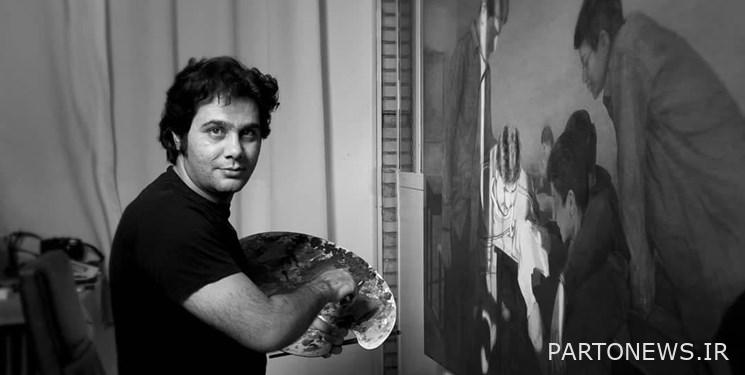
Fars News Agency – Art Group: Muslim Khezri was born in 1984 in Kerman and graduated from Tarbiat Modares University in Tehran with a master’s degree in painting. He works as a teacher and in addition, he developed his interest and specialty, namely art, and in 2009, he organized an exhibition of his works as “We are still studying” and provided the ground for his fame.
In these works, Khezri drew the classroom atmosphere and his students with pencil, watercolor and oil paint techniques. Asked why he chose the lesson space, he says: “What spaces can we find that have an internal geometry? For me, the classroom had this geometry, a computational division that could interestingly help me with formulations and form coherence, and light could reinforce it; Light that really existed without manipulation. “In schools, curtains are made in warm colors, and that was very interesting to me. It was amazing when the light came on the curtains and gave an exaggerated reflection.”
He explains the content of his works, which are classrooms: Realism shows itself in respect for reality. My paintings show a real thing that is not very visible. Maybe because kids at that age are not taken very seriously. But he himself created a real situation for me and without manipulating it, it can be imaginative for the audience.
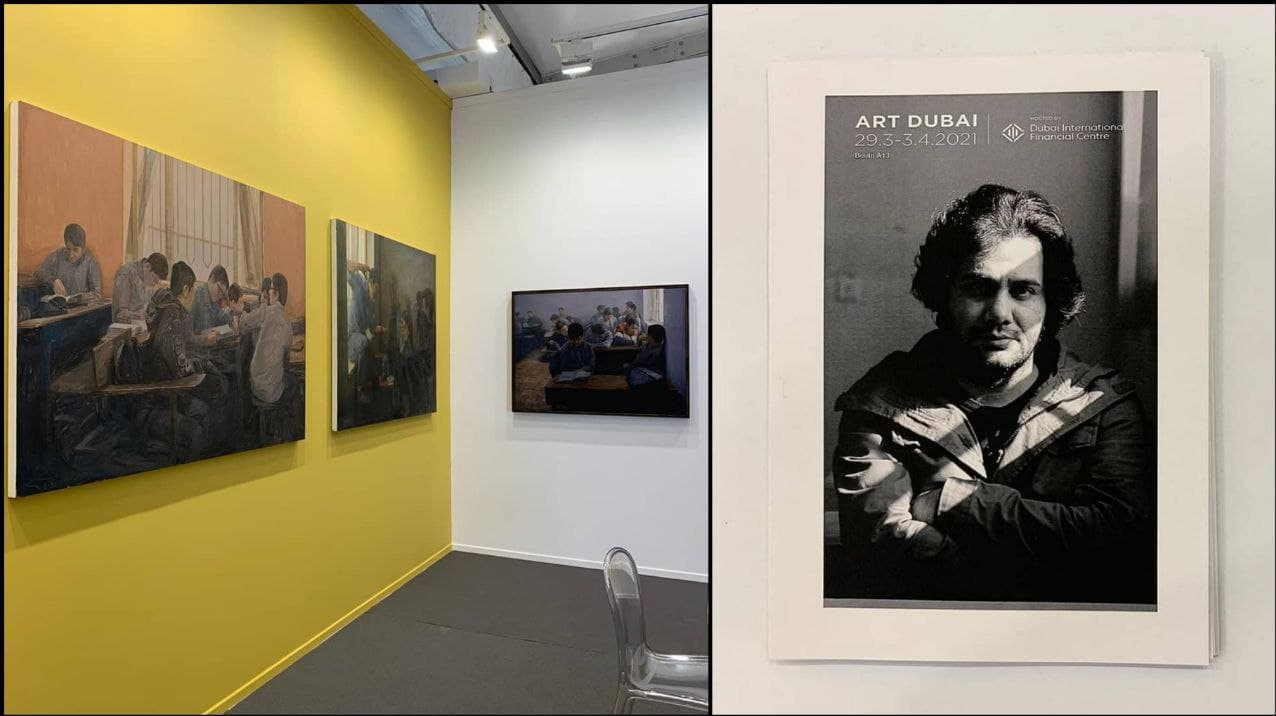
After this exhibition, Khezri participated in Art Dubai 2021 the following year with the help of Saradipour Gallery, and ironically, he also had a brilliant presence, and his works were well received by the audience. “These images reflect collective experiences and move across the boundaries of suffering and joy, punishment and encouragement, possibility and limitation,” he said of his paintings. Of course, he had already proved that he was interested in the category of figures in the visual arts by writing the book “Figurative Perspective in Contemporary Iranian Painting”.
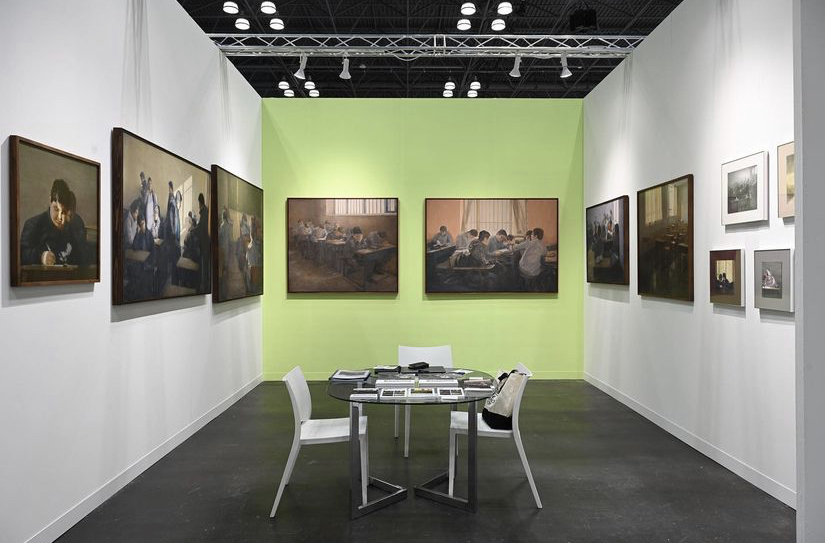
Five months later, in September 1400, Saradipour Gallery exhibited Moslem Khezri’s collection “We are still studying 2019-2020” at the “Armory Show 2021” in New York, and won the award for the best pavilion for this art event. Perhaps this success prompted Khezri to show the second series, “We Are Still Continuing”.
Ali Golestaneh, a critic and translator of the visual arts, had said of Muslim Khezri’s paintings: Relationships between characters. The sculptures he depicts in these paintings are not only static and show transient movements and unstable states, but moreover, there is a meaningful social connection between them … In the context of contemporary Iranian figurative painting, the author thinks that this “Showing the movement and connection between the figures deserves special attention.”
In the following, under the pretext of May 4, “Teacher’s Day”, we will review the works of this painter-teacher.
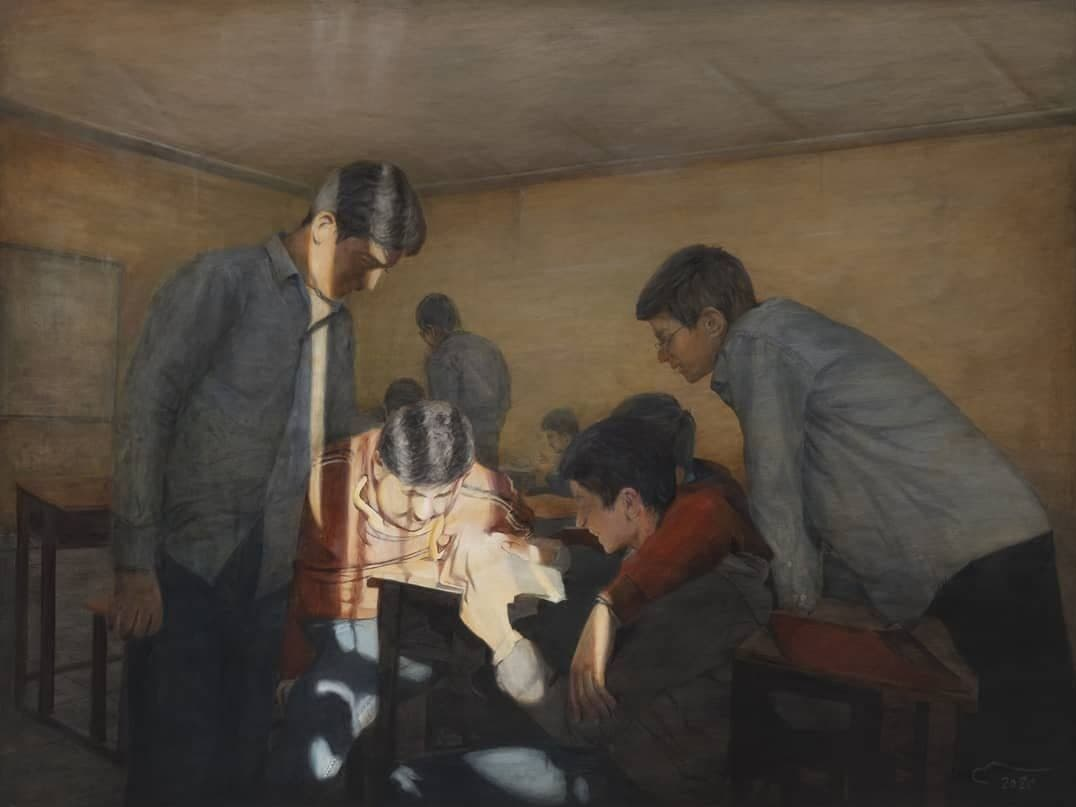
Moslem Khezri’s classrooms are somewhat reminiscent of the “third-degree wagons” series and scenes of the Second Honor court: figures with expressive facial expressions and body language and a variety of characters lined up in a closed space on benches. The same theatrical atmosphere, the effect of light and sometimes even the same contagious boredom that can be seen here and there in the frames of Khezri’s present collection. From here, however, the path of the two artists diverges; Contrary to the sharp and critical brush of the French designer, the contemporary painter-teacher did not paint his pen in the color of personal opinion. Beyond social interpretation or the reflection of a particular time or generation, what he seeks to recreate in his paintings is a common extract of the senses and memories; A familiar part of “being” to the fragility of butterfly wings. And so the colors are soft and subtle, and the effect of the painter is subtle and light-hearted.
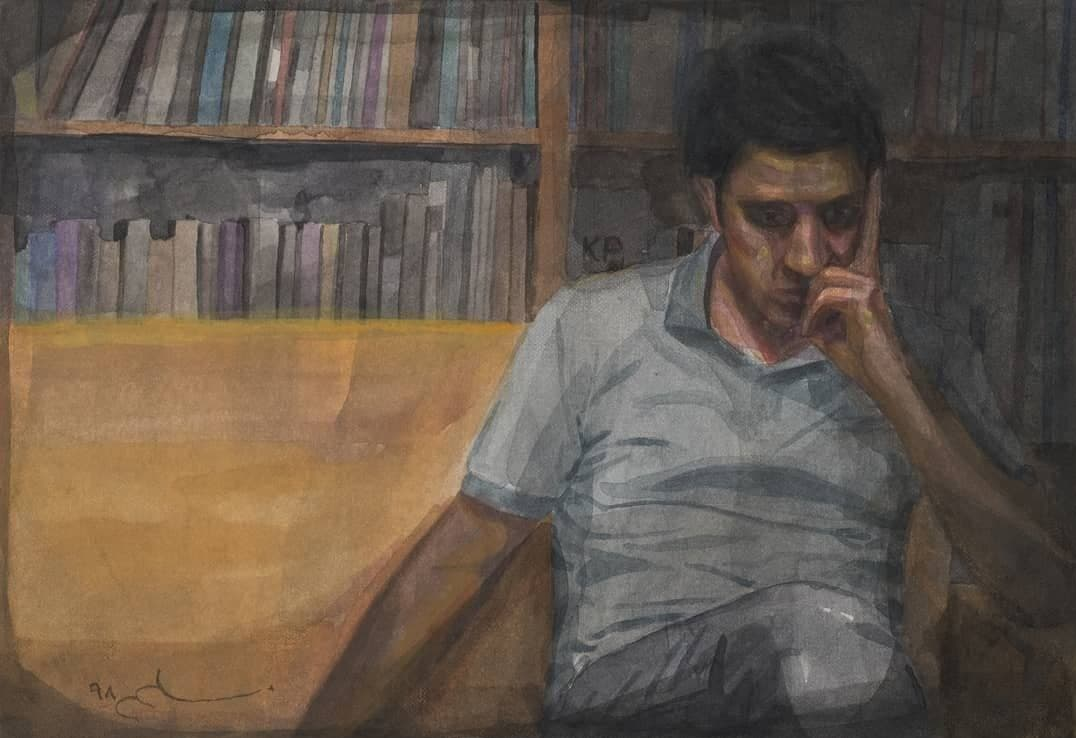
None of the frames may have evoked as much loneliness as this effect. Because they often host several human beings, and if there is a single character, at least the sunlight accompanies him. Here, however, the prevailing blur, the trick of horizontal framing – contrary to the tradition of vertical portraiture – and the crawling of the figure to the right corner and the left half empty, go hand in hand to intensify the sense of loneliness; Again, we are faced with a bold absence. If it weren’t for that big orange stain or the back of the furniture, the feeling of fear of the closed space would probably have been the spice of this loneliness. But body postures are not a sign of anxiety or confinement. Apparently our character is lonely, not out of algebra but voluntary. Something invisible but thick has stuck between him and his peers: the gross jokes and slanders of his classmates? Or maybe a bitter secret that can only be contained in the secluded corner of the library.
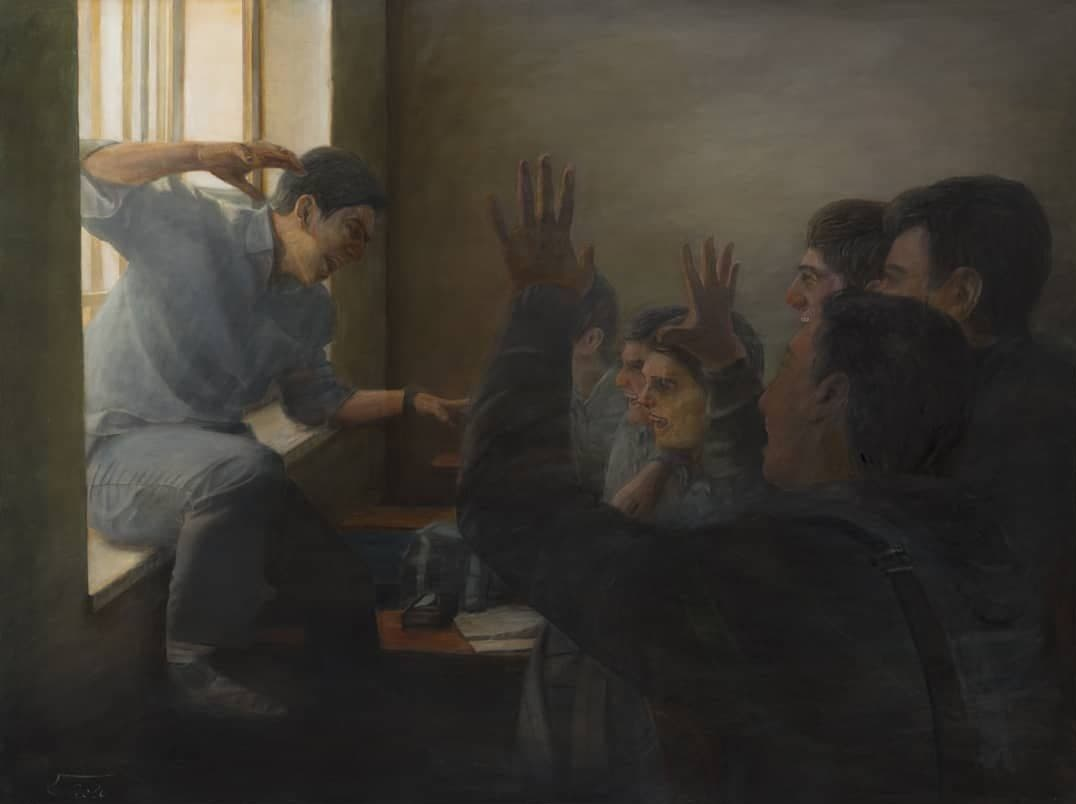
We are facing the most dramatic scene of this series. Baroque scenes: The intensification of the contrast between light and darkness, a strong and defining light source from the left, and ironically, the source of the incident also comes from the lens of light. The source of light and chaos is one. It is as if all that perceptible restrained energy erupts throughout the curtains in this unbalanced and emotional composition, shattering the hard skin of order. For the first time, children break the hegemony of horizontal and vertical space with their bodies and screams. Their facial expressions are even somewhat reminiscent of masked portraits, and the grotesque is by Belgian painter James Ensor. But this is neither a story of a historical war nor the last bloody moments of the life of a mythical figure, and the painter recalls this fact by preserving soft tones and drawing thin layers throughout the scene. Teenagers are making their teens. And if there is a drama at work, it is the result of a heterogeneity of youthful passion with a narrow, pale, and humorous architecture woven around it.
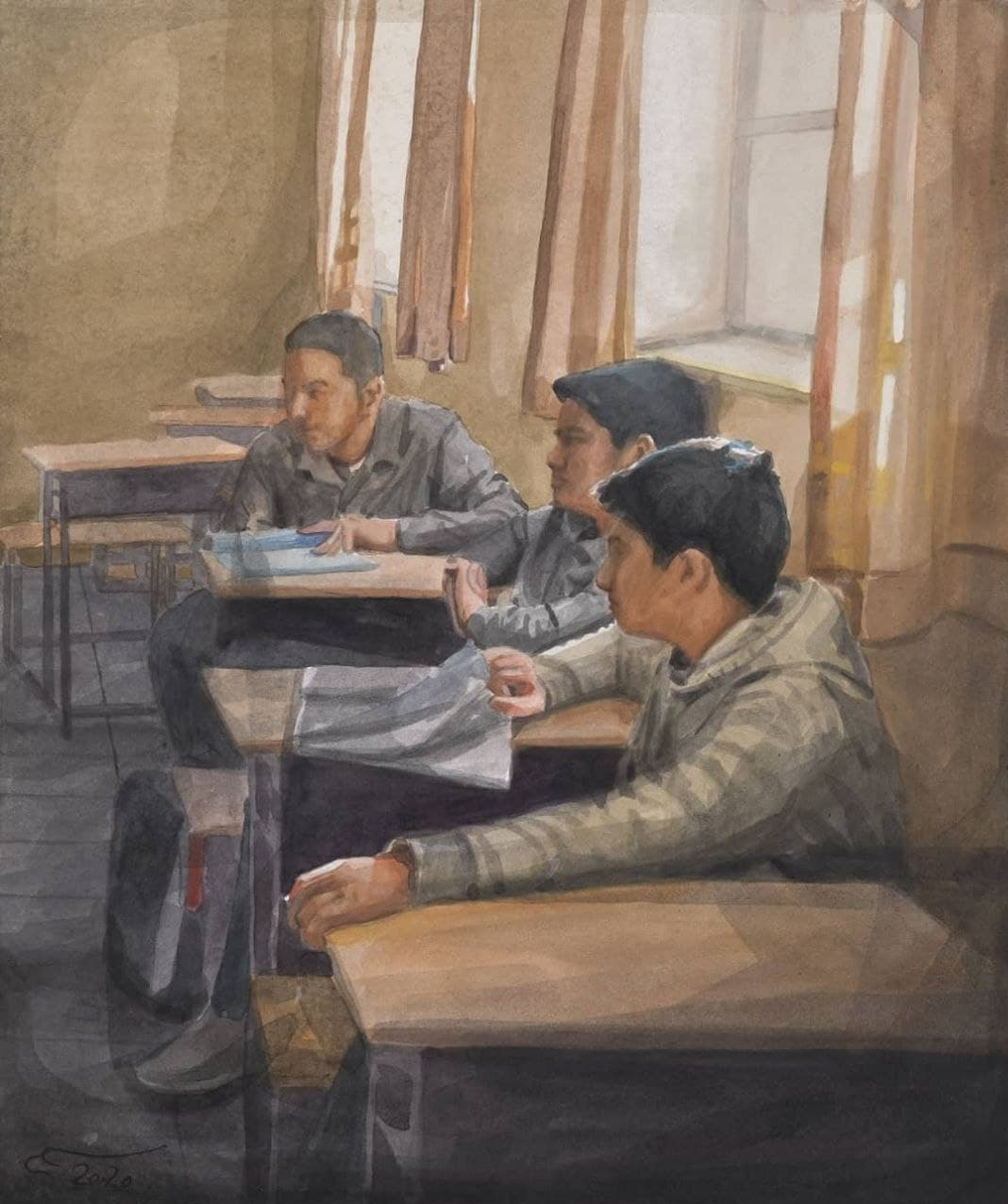
This vertical frame hosts several visible and hidden appearances at the same time. In terms of composition, the weight of the scene is inclined to the right. In the first place, the audience’s eye catches the rhythmic traces of inclined tables, bridging from one figure to another; It stops for a moment along the curtains and the luminous stillness of the windows until it finally leaves the image in the middle left corner. In the second encounter, however, when we look closely at the position of the bodies and the details of the faces, it is precisely the extreme left and even outside the frame that catches our attention. The focal point of the class is shifted, and students with more relaxed gestures but keen gazes are focused on a presence beyond the realm of color; Colorless presence and role but attractive. Perhaps this is one of those rare and heartwarming moments of a quarter of an hour left over from the fun, when Lakhti’s teacher becomes the guest of honor on the benches and shares a close but valuable memory of life beyond the windows and walls with her students.
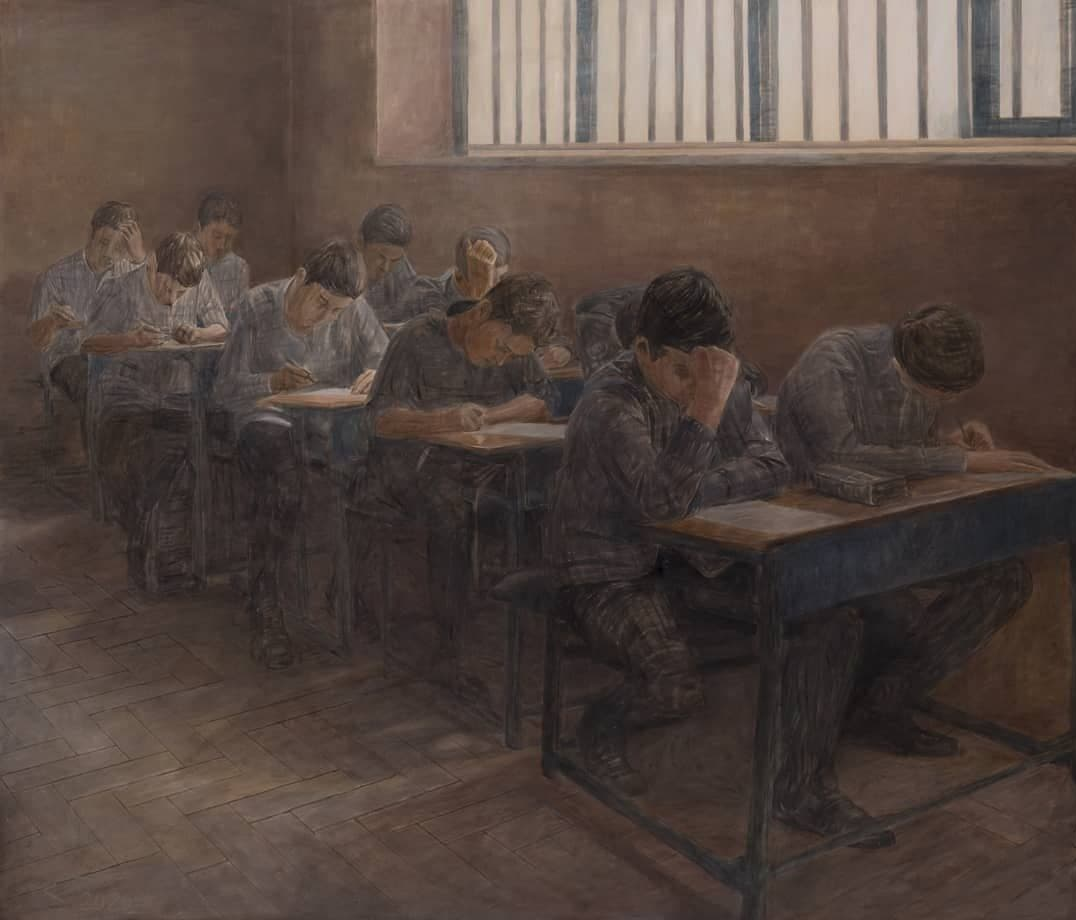
Muslim Khezri’s frames each – whether in public or in a vacuum – illustrate a kind of presence: the presence of light; Human presence in the architectural space; Common sensory vibration in space; Invisible but tangible grandeur of the teacher; Concentrated presence of restraint. The constant presence of time and the subsequent birth of memories; And even the sneak peek of the audience.
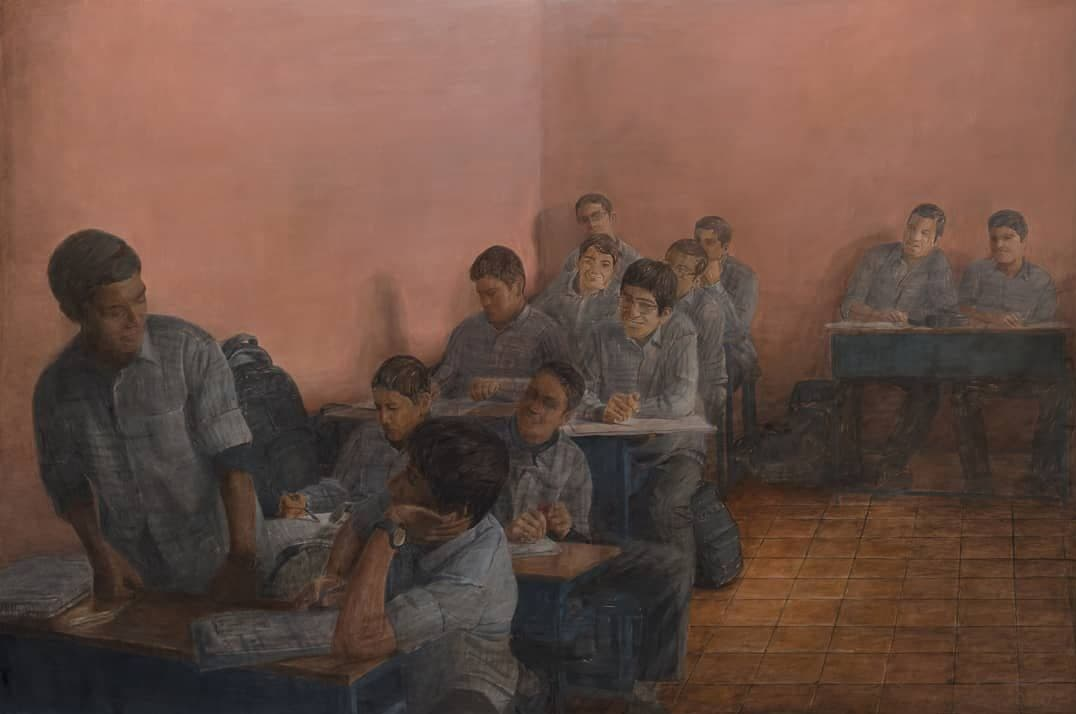
The light source is clear from the figures and shadows, but still dim. Surrounded by the warm color of the interior – especially the flesh color of the walls – the students are like Jonah trapped in the belly of a monster; And the closeness of the tones of the clothes and skins to the tables and benches creates a formal integration, as if we were dealing with a multi-headed creature; A creature in the womb of another creature. Thanks to the magic of the painter’s pen, an everyday and boring scene suddenly comes to life on the same sheet of childhood fairy tales. But do not worry. The boys know how to make fun of their subjects, even from a simple sit-down or letting their train leave the classroom. The dynamic rhythm of the heads and the open space of the right half make the composition heavy. Be with your comrades, imprisonment in the belly of a fish has its own purity!
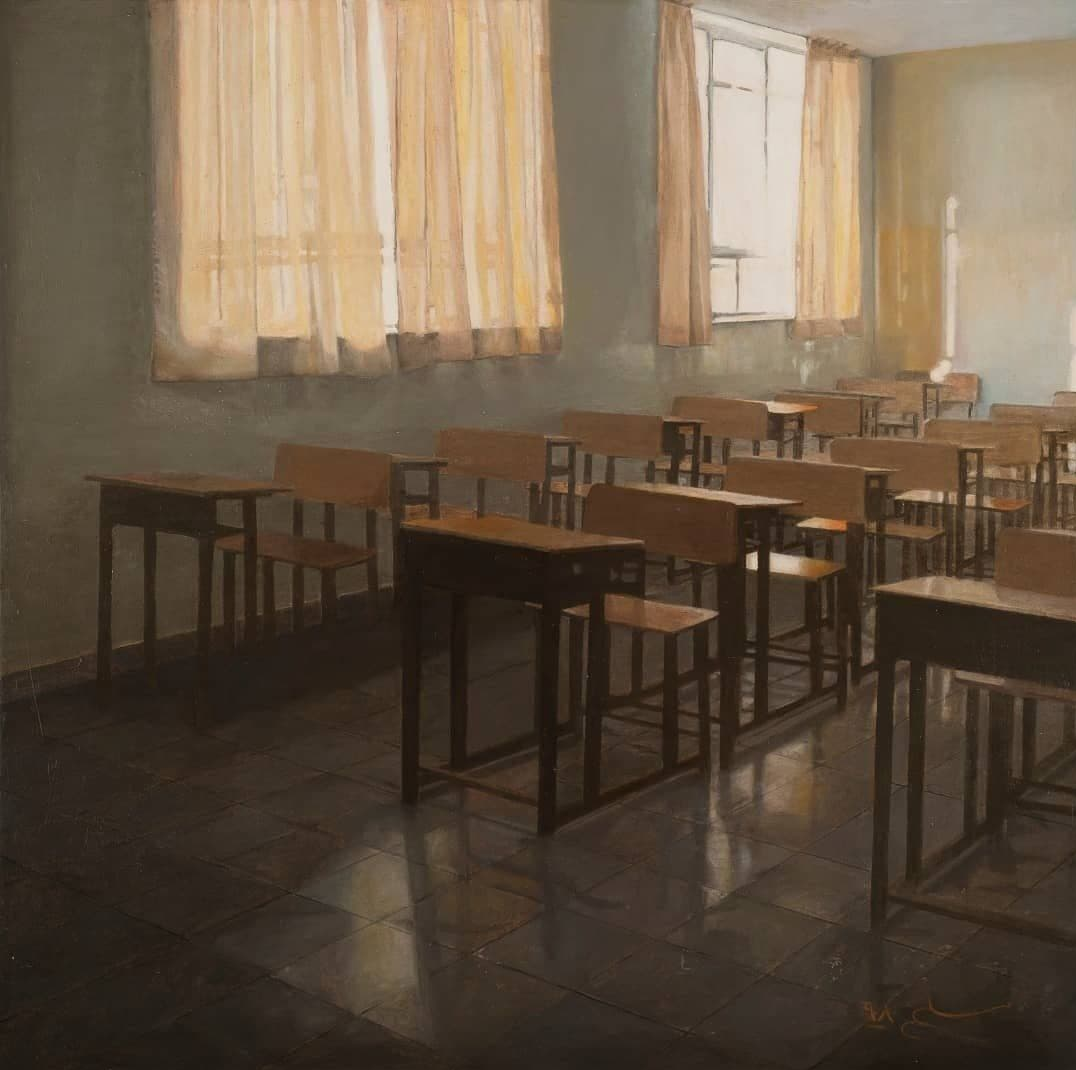
End of message /
You can edit this post
Suggest this for the front page

